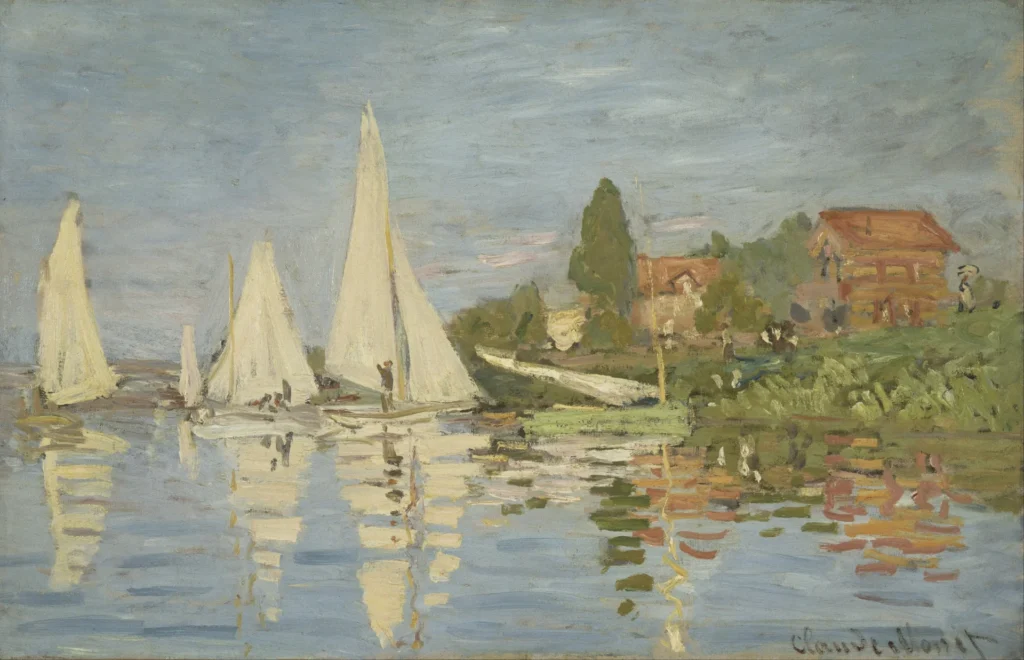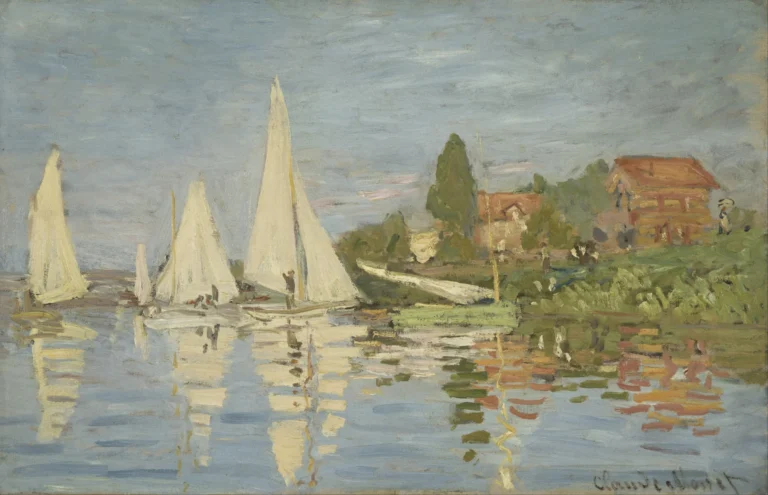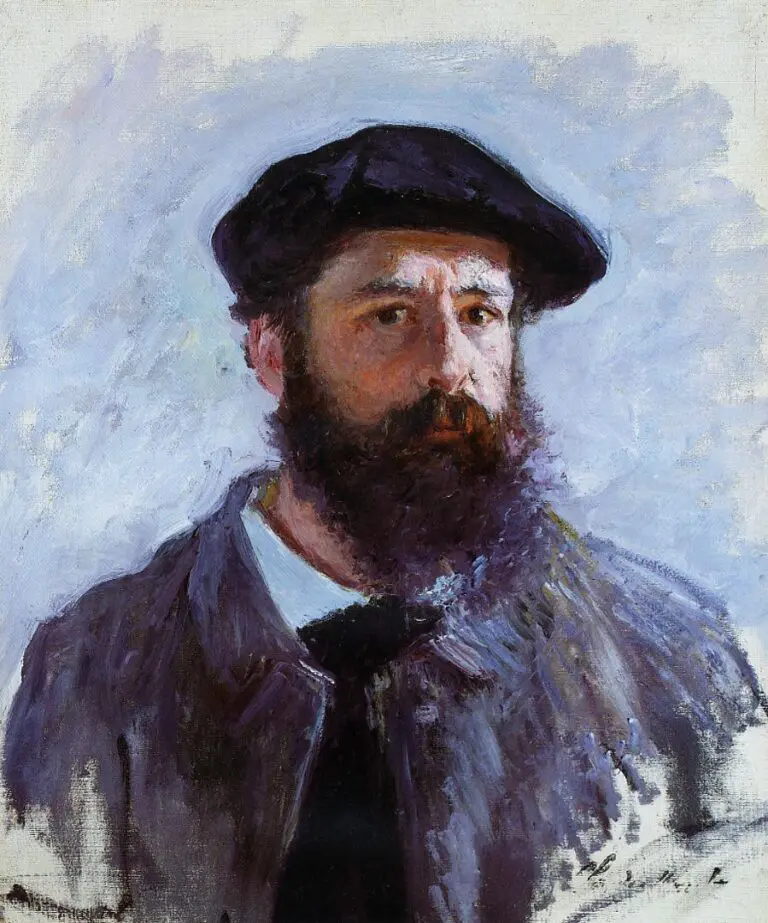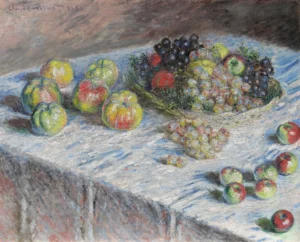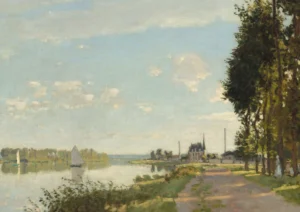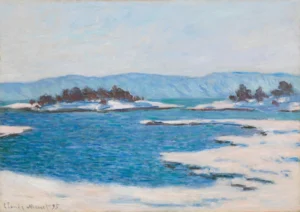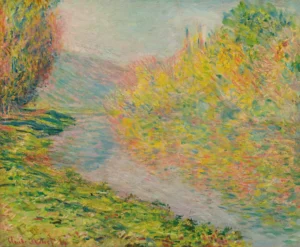Regattas at Argenteuil (1872)
Painted in 1872, Regattas at Argenteuil showcases Claude Monet's extraordinary ability to capture the shimmering light and movement of a bustling regatta scene on the Seine River. Set in the idyllic town of Argenteuil, the artwork vividly depicts boats adorned with colorful sails amidst rippling waters under natural light. Monet’s use of vibrant colors and fluid brushstrokes emphasizes his innovative approach, marking a crucial moment in the birth of Impressionism.
Year 1872
About the Artwork
Claude Monet created Regattas at Argenteuil during a period of artistic exploration and innovation in the early 1870s. This painting emerged from his time in Argenteuil, where he found inspiration in the scenic beauty of the Seine River and the popular boating culture of the area. Attracted by the location's popularity and its accessibility to Parisian society, Monet expertly utilized outdoor settings, painting en plein air with portable easels to directly engage with the shifting atmospheric conditions. The painting was part of a larger collection of works he produced in Argenteuil, marking vital progress toward the formation of Impressionism as a distinct art movement. The piece passed through the collection of fellow artist Gustave Caillebotte before settling into its current home at the Musée d'Orsay, where it continues to resonate with viewers as a defining example of Monet's genius.
Did You Know
While painting Regattas at Argenteuil. Claude Monet was at the forefront of a burgeoning artistic movement that sought to redefine how light and color were perceived in art. This painting predates the first Impressionist exhibition by two years, highlighting his essential role in the movement’s development.
Argenteuil served as a picturesque getaway for many Parisians, with the Seine River becoming a hub for leisure activities in the 19th century. Monet’s frequent visits to this area inspired numerous artworks that encapsulated the joy and vibrancy of social boating events.
Monet’s innovative use of color and light in Regattas at Argenteuil exemplifies his experimentation with capturing fleeting moments. The fragmented brushstrokes and vivid palette reflect not only the scenery but also the atmospheric conditions, establishing his reputation as a master of Impressionism.




